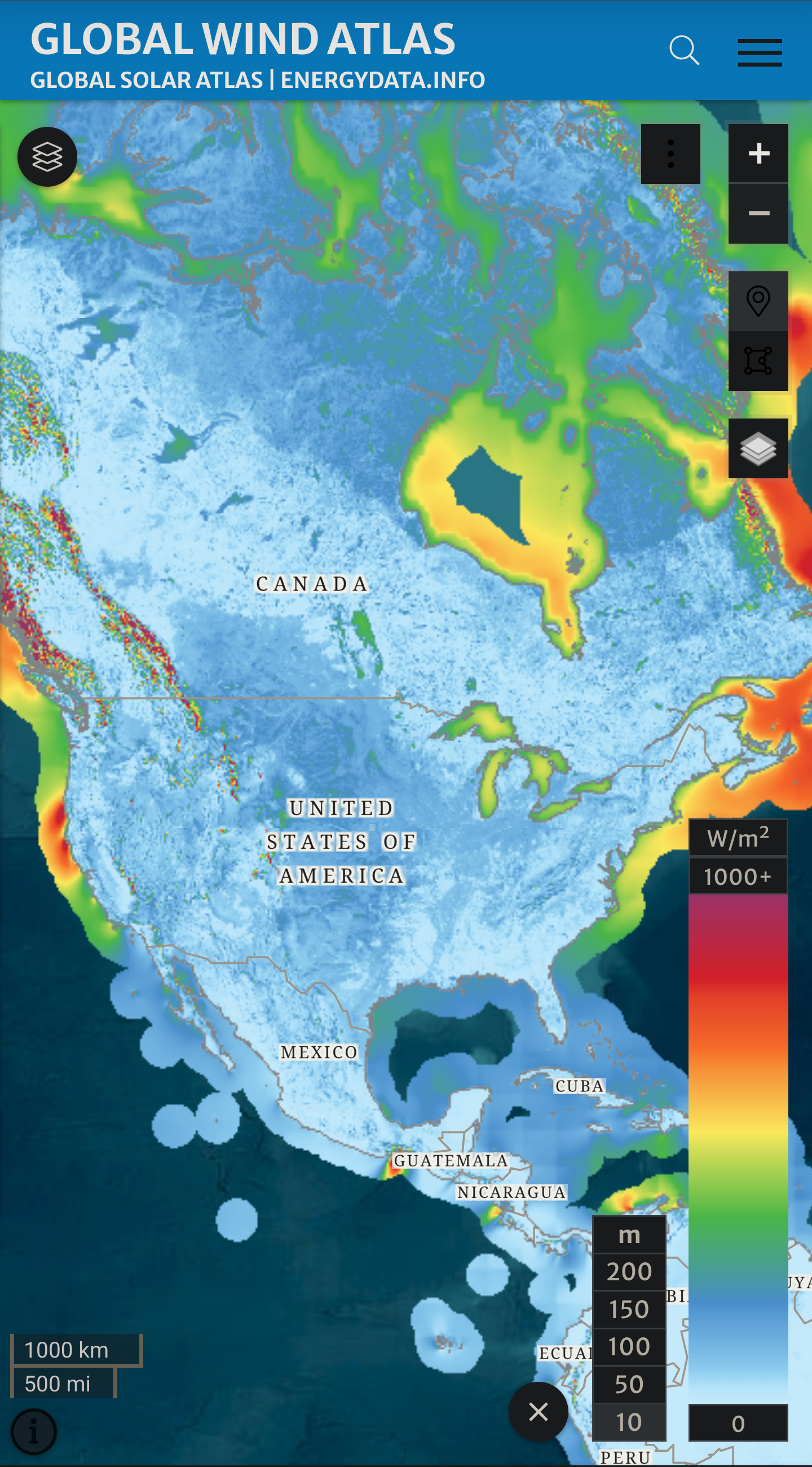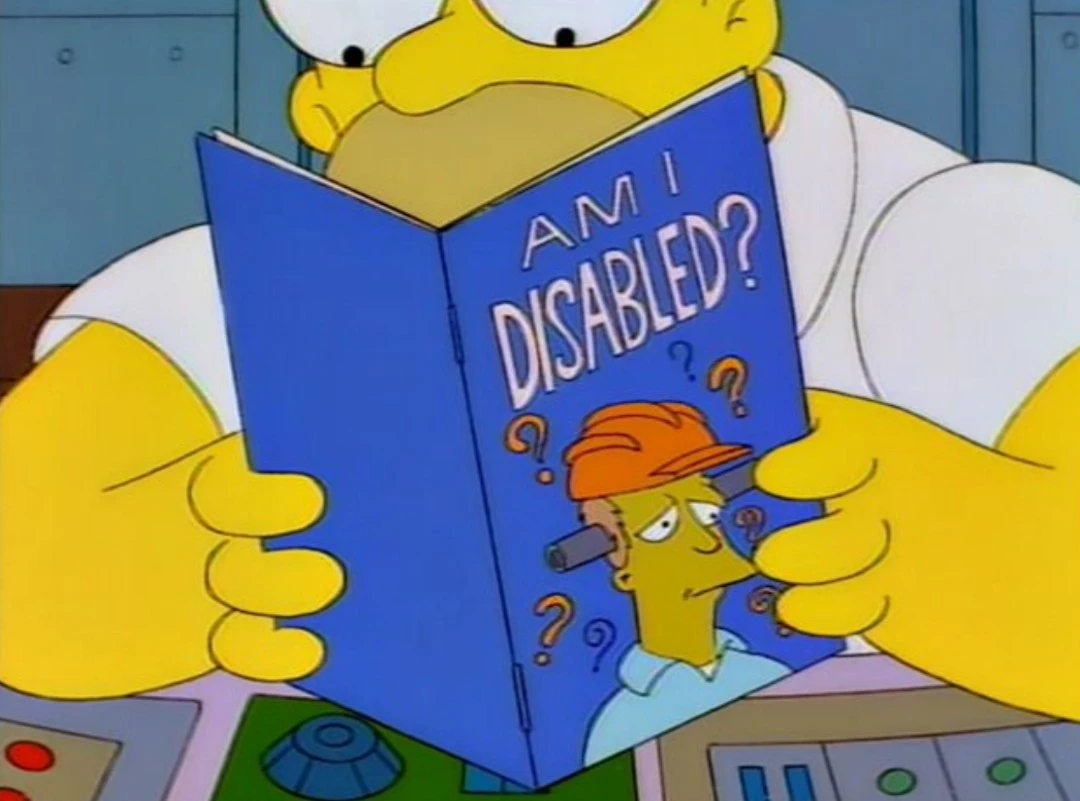The answer is batteries. And dismantling capitalism, but batteries first
Nah, lets squash capitalism first.
Lets squash it with batteries, they are heavy for a reason.
Batteries for something like this would be something like a lake on top of, and at the bottom of, a mountain.
Then you use excess power to move water up, and when you need power, the water comes down through a turbine.
Not saying we shouldn’t do both, but in reality waiting to destroy capitalism before fixing the grid just means you have too much theory and not enough praxis.
Honestly, this attitude is downright suicidal for our species right now. Capitalism took centuries to develop. Anything that replaces it will form over a similar time scale. And with climate change, that is time we do not have.
I’ve got some bad news though. If our markets keep ignoring the environmental cost of… well, pretty much anything, as they always have, capitalism will also fuck us over in the long run. I’ve even heard it’s already happening…
CapitalistsPeople in just about every system ignore negative externalities, which are defined as costs borne by other people for the benefits that they receive themselves. Ironically, capitalism might be the best short-term solution, if only we had the political will. One of the major functions of government is to internalize negative externalities, via taxes and regulations. It’s easy for a factory owner to let toxic effluent flow into the nearby river, but if it costs enough in taxes and fines, it’s cheaper to contain it. We just need to use government regulations to make environmental damage cost too much money, and the market would take care of re-balancing economic activity to sustainable alternatives. The carbon tax is a well-known example of this technique, but we’ve seen how well that has gone over politically. Still, it’s probably easier to push those kinds of regulations in a short time frame than to fundamentally revamp the entire system.A non-functioning government is also a feature of capitalism, though.
A big flaw in German energy policy that has done a great job in expanding renewables, includes not giving its industry variable rates, that lets them invest in batteries, and schedule production more seasonally, or if they have reduced demand due to high product prices from high energy costs, just have work on the good days.
Using EVs as grid balancers can be an extra profit center for EV owners with or without home solar. Ultra cheap retail daytime rates is the best path to demand shifting. Home solar best path to removing transmission bottlenecks for other customers. Containerized batteries and hydrogen electrolysis as a service is a tariff exempt path at moving storage/surplus management throughout the world for seasonal variations, but significantly expanding renewables capacity without risking negative pricing, and making evening/night energy cheaper to boot.
As a solar punk, I have solar panels, some batteries, and all my stuff runs off USB or 12v. I don’t pay utilities
How do you heat water?
He shakes himself really fast in the tub
Three options: 12v cup, small camp stove, and large wood stove.
Can you share the model of that 12V cup? I’m looking for something similar :)
There’s many out there, but I ended up with this one
Thank you!
We have such a stupid fucking system for running society. We go out of our fucking way to block better options simply because they don’t maximize profit. Not even “are actually unprofitable,” just that they don’t maximize profit.
Never forget the plot of space balls is that they figured out how to monopolize the air.
It was released in 1987.
Mel Brooks is the goat.
I’m going to a screening of this movie on May 4th actually. :)
Who is “we”? Fuck that.
The capitalist class?
Great comments in here that understand the actual issues, instead of, ya’ know, the usual.
Something I haven’t seen in the thread: Can someone address the costs of keeping the infrastructure maintained? Free power sounds great, but it can never be free. Entire industries must be paid to manufacture pylons, wire, transformers, substations, all that. Then there are the well paid employees who are our boots on the ground. (Heroes to me!)
How is solar disrupting the infra costs?
The actual issue, as stated in the original article is value deflation, aka investors not making enough money to justify energy transition to a timeline where humanity still exists in 100 years. Decoupling the issue from the political and economic aspect is disingenuous at best.
It’s called a connection fee that is levied whether or not you used any energy that month. Those fees will likely go up to make up for decreased energy distribution revenue.
All/almost all net metering plans will still charge access and/or infrastructure fees.
Here in Belgium, the component related to power generation is only about one fifth of the residential power bill.
Most are (1) connection costs (what you describe), (2) taxes, (3) subsidies for solar and wind to replace gas power generation, and (4) since 2 years, subsidies for gas power generation for when there’s too little solar and wind.
They’ve got economist-brain and view everything as a money thing, which is fucked up and a problem.
But negative net demand (the thing “negative cost” is signaling) is a pain in the ass, because you either need to shut off the panels from the grid, find some very high-capacity and high-throughput storage, or blow out your power grid.
Like some hydroelectric dams in Germany get run backwards, pumping water back up behind the wall. I think there are pilot projects to pump air into old mines to build up a pressure buffer. Grid-scale batteries just aren’t there yet.
Solar is good for things where the power demand is cumulative and relatively insensitive to variation over time (like, say, salt pond evaporation, but you don’t actually need panels for that). It’s also good for insolation-sensitive demand (like air conditioning).
Turns out distributed rooftop solar makes more sense given our current grid than big solar farms out in the desert (California built one, it was not a good use of money).
It’s not great, but we need to bite the bullet and use fission+reprocessing in a big way for the near future.
Agreed. It’s framed incorrectly, but the real problem is the “duck curve,” the time disparity between peak generation and peak consumption. Pumped hydro, battery storage, electrolysis, and mechanical storage are all options, but each has its own constraints. Ultimately, though, it’s an engineering problem with viable solutions. We just need the political will for the investment.
Distributed rooftop solar is the worst way to use our grid. It’s designed to pump a lot of power from a single place to a lot of little places. The opposite doesn’t work very well.
The solution is to not focus on solar by itself. Solar/wind/water/storage/long distance transmission need to be balanced with each other. Each has strengths and weaknesses that cover for the strengths and weaknesses of the others.
Distributed rooftop isn’t supposed to be about feeding the larger grid so much as topping off local demand right when it’s needed.
I’m kind of eccentric so I got a humongous array; even then at peak production I was running the A/C for 3-4 houses in my cul-de-sac other than my own. Most installations around where I live are like 1/4 of the size I put up and rarely feed much back.
And home-scale batteries are getting cheap enough that excess won’t necessarily need to get fed into the grid anyway.
If you’re describing nearly free and unlimited electricity as a problem, you may want to reconsider some things.
It’s how capitalists think about land, water, air, etc.
… And violently attacking people by depriving them of these needs.
It’s a very capitalist way of thinking about the problem, but what “negative prices” actually means in this case is that the grid is over-energised. That’s a genuine engineering issue which would take considerable effort to deal with without exploding transformers or setting fire to power stations
Home owned windmills, solar panels and battery storage solves that.
Edit: Look at this awesome diagram of how it’s done for a hybrid setup that’s about $400 on Amazon.

In no home outside of fringe uses are any lights 12vdc, with the exception of maybe led strip lights for undercabs. They’re all designed for 120vac. That lightbulb in the diagram is an e37/medium base for 120vac.
How, exactly, does that solve anything? It’s not like we can add some kind of magic automatic residential cutoff system (that would just make it worse) and residential distribution is already the problem! Residential solar is awesome (tho home batteries are largely elon propaganda…) but they only contribute to the above issue, not solve it. There are ways of addressing it, but they’re complicated and unglamorous.
I don’t see why home batteries are propaganda. Those prices are plummeting and they have decent payback times in some markets.
The reasons for getting solar is the same reasons for getting batteries.
Because home batteries, while provisionally useful in the same way as a standby generator (though the generator is going to be far more eco friendly than the batteries over their respective lifetimes), is a vastly inferior solution to the implementation of even local grid scale solutions. Also because there is essentially 0 infrastructure designed to handle said batteries, they wear out quite quickly at home scales (unless you’re using uncommon chemistries, but if you’re using iron-nickle batteries you’re not the target audience here) and because Elon popularized them with his “powerwall” bullshit entirely to pump the stock value of Tesla’s battery plant (which is it’s own spectacular saga I encourage you to look up, it’s a real trip).
Batteries in the walls are useful in niches, but the current technology which uses lipo/lion/lifepo4 chemistries is inherently flawed and a route to both dead linemen and massive amounts of E-waste. They could be useful potentially, but as it stands, it’s really bad right now.
You need to look up how much grid storage lithium batteries are being built. It’s exponential growth. Faster than solar.
The reason it’s worthwhile is because solar makes energy with 0 or near 0 price to the owner in certain places, if they store that and use it for later they save money. There are cost calculators out there and for certain markets they make sense.
Of course Tesla pushes it they got a product people want and it makes the consumer and Tesla money. Win win. That’s business, nothing shady about that.
Yes batteries are better on the grid but that’s for exactly the same reasons why solar is better on the grid.
O…kay but that doesn’t address anything I actually said.
is a vastly inferior solution
How so?
local grid scale solutions
Which ones?
there is essentially 0 infrastructure designed to handle said batteries
If we’re talking residential scale, people already have the infrastructure: it’s the existing wiring inside their household. If we’re talking Commercial & Industrial (C&I) scale, it’s often the same answer. If we’re talking utility scale, oftentimes battery developers get quoted grid improvement costs from the utility and the developer has to pay those costs in order to connect to the grid. You act like the grid can’t change, and there isn’t any money lying around to make improvements, when in reality there are a lot of investors in BESS because of the high ROI.
they wear out quite quickly at home scales
This is true at any scale, resi, C&I, or utility, but batteries are modular and you can augment your capacity over time to make up for degradation.
Elon popularized them with his “powerwall” bullshit entirely to pump the stock value of Tesla’s battery plant
There are more manufacturers than just Tesla in the battery space, many of which who would benefit if the Powerwall failed or lost market share. Even if Tesla popularized them, their decline due to their idiotic, fascist CEO will mean that the existing demand will just look elsewhere for the same product, not exit the market entirely.
Batteries in the walls are useful in niches
In my opinion, every household could benefit from home battery storage just as much as people benefit from gas generators. They have widespread, not niche, appeal. The issue with low penetration in my opinion is lack of knowledge in both policymakers and customers.
the current technology which uses lipo/lion/lifepo4 chemistries is inherently flawed
While batteries do start to degrade the moment they leave the factory, the fact they have flaws doesn’t mean they aren’t still useful. You’re using the argument that the perfect is the only solution to the imperfect, when that shortsightedness gets in the way of progress.
route to both dead linemen
BESS failures have been falling and bottoming out over the last few years while deployment has skyrocketed. Seems like you’re telling a fiction.
massive amounts of E-waste
Recycling is projected to increase, especially as more and more battery installations reach End of Life (EOL), where as much as 60-80% of cobalt and lithium could be sourced from urban as opposed to virgin mines in the next 5-15 years. There is a sizable market opportunity for recycling to take off so long as good policy paves the way.
as it stands, it’s really bad right now.
Sure, let’s throw away one of humanity’s better solutions to the climate crisis since it’s bad now. It’s not like it could get better in the future. Again, such a show of shortsightedness.
How so?
That’s everything I’ve been talking about, you even go on to exhaustively quote what I’ve said that answers this question. Did you have a reason for saying this other than being combative? No, seriously, I really care about this subject and it’s clear you do too. And the most hardline thing I’ve said is that home battery walls and solar installs aren’t very good right now, and that local-grid installs are superior (I expand on that below). Surely there’s more constructive ways this could be approached.
Anyways, a couple points:
BESSFID (the common initialism? Not sure!) does not track interlock failures, which after them falling on you is the most directly dangerous aspect of both battery walls and standby generators. Unexpectedly energized lines are not something an average user understands, which is why it’s responsible for so many dead linemen. Generators (and now battery walls) feeding back into the grid during an outage are the #1 cause of unexpectedly energized lines, and this is very basic knowledge. It’s why every municipality requires a generator interlock be installed at the box for home-consumption power generation. No grid in the world is yet robust enough to prevent this danger.
[That batteries wear out] is true at any scale, resi, C&I, or utility
Yes and no! While yes batteries will always wear out, municipal facilities are not restricted by things like space constraints or residential safety concerns. This means they can implement battery degradation mitigation techniques that are impractical (or feasibly impossible) to be implemented on a residential scale, like distributed cell charge/discharge limits (which at their most effective handicap residential units by up to 20% of their rated capacity but greatly increase the lifetime) or direct cell cooling (which benefits spectacularly from economies of scale - active cooling on small packs is a huge drain for little return, but large scale battery installs can even use geothermal cooling to additionally increase their efficiency). Neither removes the fact that cells do wear out, but it greatly reduces the rate at which they do, and at a significant energy and space savings over alternative techniques. (You’ll note that these are many of the same reasons that municipal standby generators are more efficient than large numbers of residential standby generators!)
(this bit is mostly responding to your personal attacks, I will admit that:)
Recycling is projected to increase […]
Yes, but I am talking about current battery technology. You’re rebutting comments I made criticizing current technology with projections and speculation about future technology, which just isn’t fair. I could (hyperbolically, I admit) do the same thing by speculating that giant lithium eating termites will be developed by some rogue nation state in the near future, and that having a power wall risks them being attracted to your home and consuming your family in a gore splattered orgy of B-movie tropes.
Sure, let’s throw away one of humanity’s better solutions to the climate crisis since it’s bad now. It’s not like it could get better in the future. Again, such a show of shortsightedness.
A similar thing here. You’re also assuming that the future will improve things, which while it’s laudable you’re still able to be optimistic (no I mean that, I’m a depressed pos) it’s also very biased to assume that things will improve as time goes on.
You’re using the argument that the perfect is the only solution to the imperfect, when that shortsightedness gets in the way of progress.
And again, but with the additional add-in that I repeatedly say that municipal installs are better than home installs, not that batteries as power storage solutions are inherently bad. Just that the technology for home use, right now, is.
I could go on but I think I’ve addressed the major points of miscommunication, if you’re interested I would be genuinely happy to keep talking about this in a slightly less aggressive conversation.
(Edit: sorry, thought I should elaborate on this one tiny point:)
Batteries in the walls are useful in niches
(this is a very self indulgent pun)
provisionally useful in the same way as a standby generator (though the generator is going to be far more eco friendly than the batteries over their respective lifetimes)
A generator can provide backup power for unlimited time if fuel is available, but it is highest cost power in the world. Batteries can be charged/discharged every day, displacing dirty energy. A generator is either rarely used or eco destructive.
If you assume what’s being compared is the platonic ideal of both technologies then you’re largely correct, but removing them from the context of the real world (where: high density battery chemistries still wear out quickly, biodiesel is common, the supply chain is a major contributor of greenhouse emissions, the need for power backups is infrequent, and where grid power is still in large part supplied by fossil fuels) isn’t very useful. Local-grid scale battery storage is the best solution we have for direct energy storage, and it’s very much maturing rapidly, but home units are still restricted in the above and countless
(because I am too lazy to count them)additional ways. Ignoring those issues doesn’t work; implementation doesn’t particularly care about theory.
How, exactly, does that solve anything?
After installation, a home owner has free electricity? I’m not trying to solve the issues for the power grid people, they have teams of people for that.
Spain and Portugal had almost complete blackouts today. You know who wouldn’t have had blackouts? The people with their own solar panels and windmills.
I acknowledge that there’s no real way to communicate sincerity online, but I’m gonna go ahead and promise I’m not trying to be a dick here when saying this:
a home owner has free electricity
I think you’re bonking up on the Dunning Kruger limit here, because that’s absolutely not how it works. Not only are the vast majority of homes not candidates for useful solar installs (you can pay someone to do it, but holy cow nearly every residential solar installer is a scam looking at you, Lumio International (how’s that RICO case going?)), but solar for home-use power generation is very much not the norm for a whole host of reasons (dead linemen one of the biggest ones) and the safety considerations for implementing it generally make it an onerous enough task to manage that it’s appeal is restricted largely to special interest users (homesteaders, preppers, S&R, power system enthusiasts, van life, etc ). There are ways this could be mitigated, but it would require a massive grid overhaul and additional constant upkeep beyond what any current grid already requires.
Here in Australia 37% of households have rooftop solar. Hardly “only special interest groups”.
Not only are the vast majority of homes not candidates for useful solar installs
Australia is an edge case for everything solar and I’ll quite happily admit that! Yay Australia, well done. That said I’d be very willing to bet that the majority of those are not-above-50%-ideal installs (don’t take that bet, I’m cheating)
Hardly “only special interest groups”
Sorry, you’ve misunderstood, I was talking about direct home power generation being special interest, not residential solar in general. Aussies don’t have a higher rate for direct power generation than anywhere else because grids are, by and large, all suffering from the same fundamental design issues. I’m not at all attempting to argue that solar installs in general are special interest, and especially with the incredibly well thought out incentives the aus gvmt has been offering for both new construction and residential conversion/installation. 100% best handling of it in the world right now.
It’s not like we can add some kind of magic automatic residential cutoff system
Of course we can. They’re called Microgrid Interconnection Devices (MIDs).
that would just make it worse
Microgrids that can disconnect from the utility at appropriate times may in fact make it better. If homeowners responded to utility alerts of high demand and opted to disconnect from the grid during those times while still having power, that would just make grid operators and home owners happier.
residential distribution is already the problem!
Microgrids are the solution!
tho home batteries are largely elon propaganda…
While residential BESSs are largely Tesla based, they are absolutely key in the energy transition from fossil- to renewables-based power sources.
they only contribute to the above issue, not solve it.
How?
There are ways of addressing it, but they’re complicated and unglamorous.
Which ways?
Which ways?
MIDs are in fact one of the bigger ones! That said, all the ones I have worked with are promising but are as-yet still unreliable enough that municipal adoption has been mired in safety concerns and the usual nonsense. To be honest that’s been ever since they were first added to the NEC (admittedly most of this initially was based on speculative concerns), because of course. There are still warranted concerns with the implementation of microgrids, including things that are obviously bullshit like a lack of confidence in the reactivity of stations to the potential for the excessive peaking large residential adoption of home batteries might cause, but also much less bullshit things like the complicating risks of having very large lithium-based batteries present in a residential fire.
They are not insurmountable concerns, but they are ones that need answering and are not a small part of why I say that currently, home battery storage solutions just aren’t there yet. Local-grid facilities (what one of your sources calls a Mini-grid) are currently the best solution, which is why so many utilities are installing them. I’ve no doubt that the issues will be worked out, and although it will be some time before the technology matures to where the economies of scale present at the municipal level are no longer a driving consideration, it’ll probably get there.
very minor stuff
While residential BESSs are largely Tesla based, they are absolutely key in the energy transition from fossil- to renewables-based power sources.
Is this what you’d intended to link here, because while you’re factually accurate in their necessity and I’m not disputing your claims, as far as I can tell the source here is only discussing local-municipal (‘mini grid’) installs, not microgrid installs, nor does it touch on the value of home-scale BESS
(edit: fixed some typos)
“put the excess energy into batteries” is an idea, and is already pretty much what is done, but the large scale implementation still requires a lot of time, effort, and expense.
Home owned windmills are almost a total waste. Its surprising how little electricity they generate especially given how much the cost to buy and install. Some real numbers. A 400w can cost almost $18k to buy and install. A 410w solar solar panel is about $250 + $3k of supporting electronics and parts. And that same $3k can support 10+ more panels. I looked into it myself really wanted it to be worth it for home, but it just isn’t. Now utility grade wind? Absolutely worth it. You need absolutely giant windmills with massive towers, but once you have those, you can make a LOT of electricity very cost effectively.
Solar panels worth it? Yes. Absolutely.
Batteries, not quite there yet for most folks. Batteries are really expensive, and don’t hold very much electricity $10k-$15k can get you a few hours of light or moderate home use capacity. For folks with really expensive electricity rates or very unreliable power this can be worth it financially, but for most every else. Cheaper chemistry batteries are finally starting to be produced (Sodium Ion), but we’re right at the beginning of these and there not really any consumer products for home made from these yet.
Yeah, right now end of life EV batteries are great for making your own power storage but that’s a level of diy beyond what 95% of people are willing or able to do
What’s infuriating is that we had electric cars before ICE powered cars. 1899. If we would’ve been investing money and effort into research for battery technology since then, we wouldn’t have this problem. Salt batteries, solid state batteries, and other promising tech is in it’s infancy because we just started to take this seriously as a society like 10 years ago.
Better late than never but it grinds my gears that the best argument against solar and wind is power storage requirements due to unpredictable power generation. Like this is an extremely solvable problem.
Yeah, right now end of life EV batteries are great for making your own power storage but that’s a level of diy beyond what 95% of people are willing or able to do
End of life EV batteries are great for grid-scale operators doing power storage, but I highly recommend against homeowners use them this way. Not just because they are complex DIY projects as you point out, but because the EV batteries that are aging out of car use are NMC chemistry. These are great for high density power storage, which you want in a car, but they are susceptible to thermal runaway if they get too hot. The original Tesla Powerwall and Powerwall 2 also used these same chemistry batteries. I wouldn’t want these in my house. However, in a utility grid scale? Sure, they won’t be anywhere near people so in the unlikely event they do catch fire its a property problem, not a lost human life problem.
I understand your concern, I totally agree that the volatility isn’t ideal, but putting it in a steel box outside your house isn’t that beyond the scope for a diy-er. Envision it the same way a generac sits outside and ties in to your house but with a safe enough enclosure.
As long as you check the cells you use when you deconstruct the car battery it should be fine. All the projects I watch online they don’t even need the liquid cooling system that it utilized when it was in the car because the discharge rate is so far below the C rating the battery that they don’t generate great like when they are in cars
I understand that cell could go bad though at any time, so the box is necessary imo
Oh yeah, super expensive. /s
https://www.amazon.com/dp/B087BY2YV7/?
The first link that came up: https://www.bobvila.com/articles/best-home-wind-turbines/
Did you not look at the specs on that product? It only produces energy when winds are above 7mph and don’t actually hit the rated output unless the winds are almost 35mph.
Almost none of the country averages an amount of wind power per square meter equivalent to the rating on home turbines at 10 meters above ground level (yellow and red on this map):

Compare to this map of average insolation:

It’s a hybrid solar and wind. Also, that’s why you have batteries for storage.
Why not skip the middleman and go straight solar, then?
Ahh I get it now. You have no idea what you’re talking about. You have the smallest understanding of something and assume that is everything. You’re so very far away from understanding the practical applications and limits. You’re also clearly not interested in learning, so I’ll leave you to your impractical delusions.
Oh I’m willing to learn. Explain it to me.
Wait so the same people that can’t drop 500 USD for an emergency are expected to drop 300 USD for a wind turbine and provide the installation of it to boot is that right
Sodium ion batteries are going to be the solution. 18650 packs are already out and perform economically. Since the molecules are so much bigger, energy density is only like 60% of lithium based solutions, but they have a very wide temperature range and are incredibly more inert and safe and density isn’t a problem for bulk energy storage.
The hurdle to overcome in inverters dealing with the very wide voltage span and bespoke charging ICs, but definitely possible and within 5 years will probably become a lithium iron phosphate competitor.
Couldn’t solar farms just strategically disconnect some of their panels from the grid to avoid that? Solar panels are always collecting energy, but if you disconnect them that energy just goes into making them a bit warmer rather than overloading the grid.
You can have your own batteries as well. If those then get overloaded, disconnect.
The grid is always over energized. That’s not a problem. Large solar and wind farms connect to the grid with great specificity about the maximum amount of energy they will put on the lines. The problem would be not enough energy. Batteries are beginning to solve the dispatch energy issue with renewables. As long as republicans don’t get their way and ruin renewable energy with unfair fossil fuel mandates, the grid will continue to modernize in this way and we’ll be fairly independent of fossil fuels in the future for electricity.
deleted by creator
Sorry for the naive question, but is it not possible to send the excess electricity to the ground (in the electrical sense)?
To effectively waste electric power like that would take quite a bit of effort. It would be easier to make a giant heater that heats up air. But that would of course also be absurd. Just turn off the wind turbines etc. to reduce power generation.
It would definitely need to be ground in a literal sense.
And even the earth has its limits. Soil is only so conductive, pump enough energy into it and you’ll turn it to glass (which won’t conduct anymore).
Oh, look! A challenge. And a business opportunity! Just get a mortgage, buy some land in the middle of nowhere and make a reverse hydro plant.
Oh, I forgot. Banks don’t loan money for stuff not already existing or net-harmful hyped-up bullshit like AI and crypto.
Nothing an open/close gate couldn’t fix. The real problem is how overly complicated we feel we need to make things.
This is some real “basic biology” level thinking here. Even if it were as simple as “Pull the lever Krunk!” then you’ve just turned all that solar infrastructure into junk for the majority of the time that we need power.
People use the vast majority of electricity in a day in the afternoon and at night - times that are noticeably after the peak solar production time. So you have all that energy going into the system with nowhere to go because battery technology and infrastructure isn’t there, and then no energy to fulfill the peak demand. This is an issue nuclear runs into as well because a nuclear plant is either on or off and isn’t capable of scaling its power to the current demand.
There are times where power companies have to pay industrial manufacturing facilities to run their most energy consuming machines just to bleed extra energy out of the grid to keep it from overloading and turning into a multi-million dollar disaster that could take years to get people back on the grid.
Not an engineer but I sometimes watch them on YouTube.
Could you not just set up a breakout point and have it arc to ground? If the power source is renewable then wasting a little when you have a full grid shouldn’t be a big issue. I’m thinking something along the lines of StyroPyro’s arcing plasma flamethrower should chew up plenty of excess power if you scale it up. As you ramp your total storage up toward 100% capacity I’d start shutting off inputs (disconnecting solars, etc) and then have what’s basically a big old Tesla coil to vent excess power over 95% capacity.
There’s obviously a lot of issues with that idea, but I’d like to throw my wholehearted support behind it anyways, just to see the expressions my FCC/Radio buddies would make when they realize someone’s running a MW-scale tesla coil as some kind of electrical blowoff valve. I can’t easily tell you the exact size of the area you’d utterly obliterate all radio communications in, but it’d be hilariously large.
Faraday cage should cover that no? Styro even mentions in the linked video that he needed to encapsulate his workshop in one in order to not get angry visits from the FCC. I’m sure for something scaled up like this you might want to nest a couple of them together.
Again, not an engineer, I could be (and likely am) wildly off base here. Not sure what makes it such a terrible idea though. I am pretty certain that a MW-scale Tesla coil probably wouldn’t blow out a larger area of communications than, say, nuclear testing would, and we do that all the time in the Midwest.
Mmmmm no, a bit of napkin math here but the RF this thing would throw off would just melt any faraday cage smaller than a midsized town.
Also no, there are not nuclear tests all the time in the midwest.
In fairness, capitalist expansion is predicated on generating and reinvesting profit. If you build an array of solar panels and generate a revenue less than the installation+maintenance cost of the panels, you don’t have any more money to buy new panels and expand the grid.
That is, under a privatized system, anyway. If you’re a public utility and your goal is to meet a demand quota rather than raise revenue for the next round of expansion, profit isn’t your concern. You’re looking for the lowest possible installation/maintenance/replacement cost over the lifetime of the system, not the high margins per unit installed.
Incidentally, this is why vertically integrated private firms that consider electricity an expense rather than a profit center have been aggressively rolling out their own privately managed solar/wind arrays. When the concern is minimizing cost rather than maximizing revenue, and you can adjust your rate of consumption to match the peak productive capacity of your grid, then solar/wind is incredibly efficient.
thats why Westinghouse had to crush Nikolai Tesla. you can’t meter wireless power.
deleted by creator
Capitalism has always been the problem, nothing new here.
Capitalism makes abundance problematic.
Supply side Jesus says put your faith in the wisdom of the CEO.
Problems for Capitalism are Solutions for Humanity
If anyone is curious as to why we don’t run the world off solar, from what I understand the big issue is power grid frequency. Unlike a turbine, solar has no intertia. If you take away light the power drop is instant. With turbines, they keep spinning due to their weight. This is especially important since if a large load is suddenly energized, the turbine might slow down but still won’t stop immediately. Maybe in the future giant electric powered flywheels or pumpgen systems can take up the slack. Nuclear would likely also help since those are essentially giant steam turbine generators. Good video with some more info here.
Those flywheels are already being installed right now
https://www.neso.energy/news/first-phase-stability-pathfinders-delivered

“Well you see there is generations and generations of ghouls that have made their entire livelihood off the established and continued monopolization of vital resources such as water and power and for some reason the rest of us haven’t gotten together and solved that clear and obvious threat to everyone and everything collectively, I know I don’t get it either.”

















